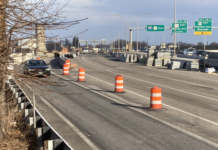Lost in the extreme heat of the arguments over the proposed Pawtucket Red Sox move to Providence has been a more nuanced view of the value of the deal. Here is a new way to look at it.
First, let us assume that if the team does not get the new stadium, it will leave Rhode Island, and with it, the $34,000-per-year lease payment the state is scheduled to receive through 2021, not to mention whatever tax revenue the PawSox generates for the state and city as a result of the economic activity at McCoy Stadium.
Second, the team has proposed that it will completely fund construction of the ballpark as well as other infrastructure work. In return, it will lease the stadium to the state for $5 million per year, and then sublease it back for $1 million per year.
The team further assumes that the state and city will receive approximately $2 million per year in tax revenue from economic activity at the park, plus a little revenue bump during the construction phase of the project of $1.64 million.
And finally, the PawSox presume that the land the stadium will be built on will be property tax free. Since it is currently, nor are there plans to change that status, no tax revenue can be presumed to be lost.
All these numbers represent cash flows in and out of the public coffers, which can be discounted back to arrive at a net present value for the deal. Discount rates normally take into account alternative investments. But there is no alternative investment on the horizon for the fallow Interstate 195 land. In fact, many of the opponents of the deal say that the state has no money to invest, so let us assume a discount rate of just the average yearly inflation rate for the last 30 years, which is 2.65 percent.
Discounting tax receipts is a different matter, however, since they will increase over time with inflation, being tied to consumer activity. Thus, the nominal value of the tax payments is the present value as well.
Based on these assumptions, the net present value of the stadium deal today is roughly negative $22.6 million. At the same time, the net present value of not doing anything (and letting the PawSox leave town) is $11.4 million (this presumes the same tax receipts for the state from McCoy as a Providence stadium, which may not be accurate). Thus, given the team’s assumptions about economic activity just at the stadium, the state should put a $34 million liability on its balance sheet today if went ahead and approved the building of the stadium under the terms the team proposed.
Some critics of the team’s economic analysis point to a history of overestimation of economic impact. For the sake of that argument, then, we can do net present-value calculations that cut the annual tax receipts to $1.5 million and then $1 million (and similarly, cut the presumed activity in Pawtucket to the same amounts). Those assumptions produce a $46.7 million and $59.4 million liability, respectively.
Or course, any of these scenarios do not factor in the potential for add-on investments should the deal go through nor the psychic damage to the state should the team leave. Nor does it take into account what benefits (or costs) might accrue beyond the 30-year time horizon.
But it might make more sense to start from numbers like these when deciding which path to take. •














First, it is impossible to predict what is going to happen in the next 30 years. Recessions, wars and catastrophic weather events would make all your assumptions invalid. Instead of throwing Pawtucket and McCoy Stadium under the bus, you should be trying to convince the new owners of the PawSox to stay at McCoy Stadium. McCoy Stadium has a proven record of success. Over the last 10 years, McCoy Stadium has averaged over 8,400 fans per game. Hundreds of neighborhood homes are within walking distance of McCoy Stadium. If a bike path was built connecting McCoy Stadium to the East Bay Bike Path in East Providence along the unused P&W rail right of way, East Bay residents, Fox Point residents and East Side residents could ride their bikes on this new 5 mile bike path to see a game at McCoy Stadium. When the new Blackstone River Valley National Park is fully funded, McCoy Stadium could be leased to the National Park and used for pageants, historical dramas and band concerts. For a 15 million dollar investment by the new owners, McCoy Stadium would be as good as any stadium in Triple-A baseball. Thousands of tourists would be near or at McCoy Stadium. Soon, hotels, bed & breakfast establishments and mixed use shopping areas would be built in the McCoy Stadium area. Thousands of fans and tourists could walk or ride a bike to see a game at McCoy Stadium. These people would feel good that while they are enjoying the game they would also be doing their part to solve the problems caused by Climate Change. Because the new National Park is coming to the Blackstone Valley, a 4 million dollar yearly investment by the State of Rhode Island would generate 36 million dollars of federal matching funds to improve the amenities and infrastructure in the Blackstone River Valley. This activity would make McCoy Stadium acceptable to the PawSox new owners. Pawtucket and McCoy Stadium have a lot of potential. Mr. Skeffington and the state of Rhode Island should realize this and keep the PawSox in Pawtucket.